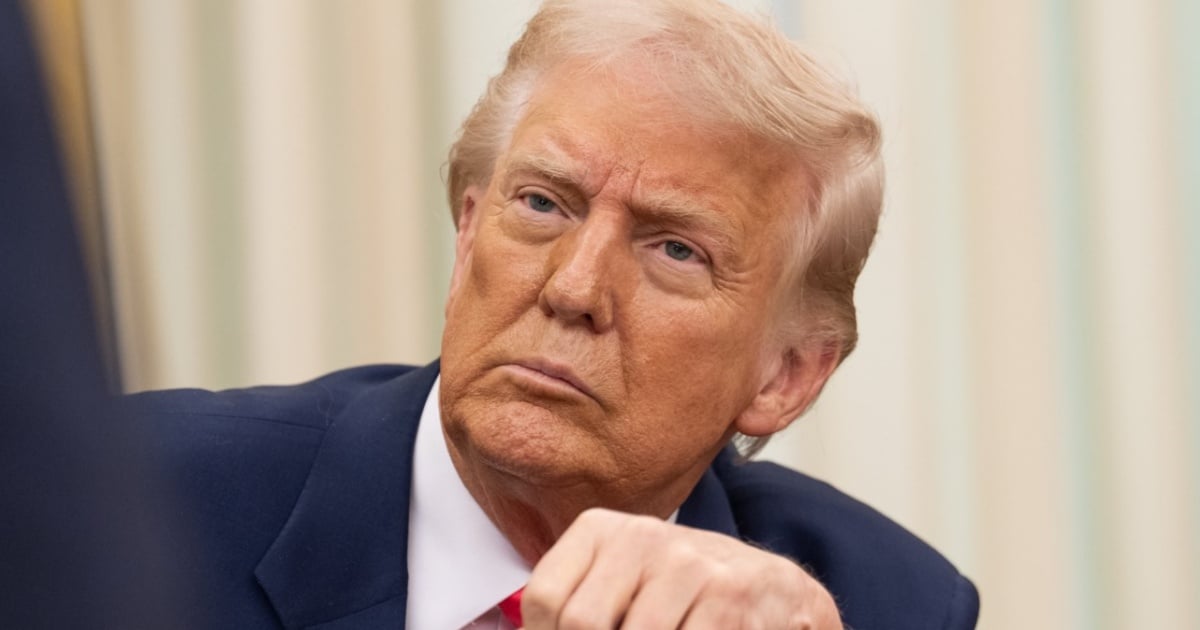President Donald Trump of the United States recently declared a significant increase in tariffs on imports from the European Union, with a steep 50% rate applied to all goods, except those manufactured within the U.S. This measure, effective from June 1, marks an aggressive shift in the Republican leader's trade policy, potentially escalating economic tensions between the two powerful regions.
Trump's announcement was accompanied by a fiery post on his Truth Social platform, filled with accusations against the EU. He claimed, "The European Union, established primarily to exploit the United States in TRADE, has been notoriously difficult to negotiate with." The President frequently criticizes the EU, accusing it of unfair practices, which he believes contribute to an unacceptable trade deficit of over $250 billion annually with the U.S.
Justifying the new tariff, Trump stated, "Our negotiations with them are stalled! Therefore, I am proposing a direct 50% tariff on the European Union, starting June 1, 2025. No tariffs will be applied if the product is manufactured in the United States. Thank you for your attention to this matter!”
The Escalating Tariff Battle
This latest tariff is part of a series of trade measures introduced since April 2025, including a 20% general tariff on European exports and 25% tariffs on critical sectors such as steel, aluminum, and automobiles. Additional sectors like machinery, agricultural products, aircraft, semiconductors, and energy goods have also been targeted, though, for now, energy goods remain exempt.
It is estimated that around two-thirds of the EU's goods exports to the U.S., valued at approximately 370 billion euros, are currently subject to these tariffs.
Europe's Strategic Response
The European response has been measured yet strategic. The European Commission has drafted a list of U.S. products worth 95 billion euros that could be taxed if negotiations collapse. However, implementation is on hold while diplomatic discussions continue.
European Trade Commissioner Maros Sefcovic is in talks with U.S. Commerce Secretary Howard Lutnick to de-escalate the situation. Sefcovic has expressed the desire for a "fair solution," emphasizing cooperation in areas like Chinese overcapacity, technological partnerships, and reducing strategic dependencies. However, in Brussels, there's a growing belief that some Trump tariffs, such as the 25% on steel and aluminum and the 10% "reciprocal tariff," may become permanent fixtures.
Uneven Economic Impacts
The economic repercussions of this trade conflict are expected to vary across the EU. Nations like Germany, Ireland, and Italy, with substantial export volumes to the U.S., are particularly vulnerable. While Spain will feel the impact, its trade relationship with the U.S. is relatively balanced, with some sectors even experiencing a trade surplus.
The European Central Bank warns that a widespread 25% tariff could reduce the eurozone's GDP growth by up to half a percentage point.
Trump's Threat to End the Trade Truce
Last week, during a business roundtable in the United Arab Emirates, Trump hinted that the commercial truce established just over a month ago might soon be prematurely terminated. He stated that within "the next two or three weeks," the White House would begin notifying affected countries about their trade costs with the U.S., regardless of any bilateral agreements.
Trump acknowledged, "We have 150 countries eager to make deals simultaneously, but we lack the capacity to engage with all of them," highlighting an operational limitation prompting unilateral action. This admission marks a departure from the previous narrative of the U.S. negotiating favorable terms one by one.
From "Liberation Day" to Potential Chaos
The roots of this trade strategy trace back to April 2, dubbed "Liberation Day" by Trump, when the White House introduced an ambitious "reciprocal tariff" policy. It aimed to balance trade and protect U.S. industries by imposing tariffs as high as 145% on specific imports, affecting strategically significant countries and those with which the U.S. has trade deficits.
A week later, on April 9, Trump temporarily suspended these tariffs for 90 days, allowing affected nations to negotiate new agreements with his administration. This self-imposed truce was meant to be pragmatic, but now seems to be reaching a premature end.
Trump confirmed, "They might appeal the measure, but overall, I believe we will be very fair," referring to upcoming tariffs, while warning that the negotiation timeline is rapidly shortening. The recent announcement concerning the European Union signals the end of the truce with Europe.
Key Questions About U.S.-EU Trade Tensions
What is the new tariff rate imposed by the U.S. on the European Union?
The United States has announced a 50% tariff on all imports from the European Union, excluding products manufactured in the U.S.
When will the new tariffs take effect?
The new tariffs are scheduled to be implemented on June 1, 2025.
How has the European Union responded to the U.S. tariffs?
The European Union has prepared a list of U.S. products worth 95 billion euros that could be taxed, but has postponed action while diplomatic efforts continue.
What are the potential economic impacts of the tariffs on the EU?
The tariffs may lead to uneven economic impacts across the EU, with countries like Germany, Ireland, and Italy being more vulnerable due to their export volumes to the U.S. A general 25% tariff could reduce the eurozone's GDP growth by up to half a percentage point.
